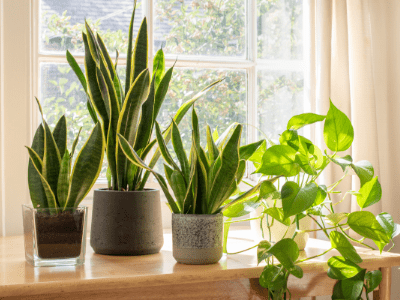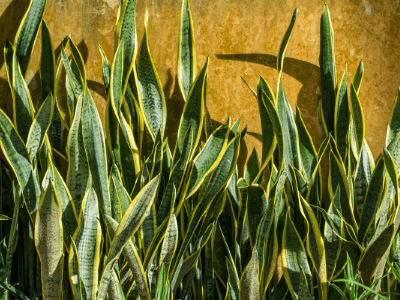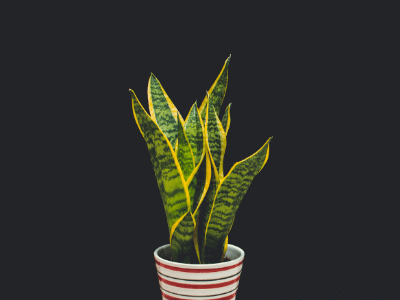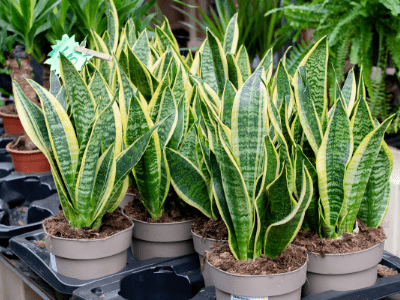
Have you have seen your snake plant splitting leaves? In terms of indoor plants, we can all agree that the snake plant (Sansevieria trifasciata) is a classic favorite.
It can survive a wide variety of unfavorable conditions and thrive even in unsuitable growing environments.
As long as it is not overly spoiled, it can survive for longer periods of time. We encounter a common problem when raising snake plants, and that is snake plants splitting leaves.
This is Mrs. Jones’ experience.
I had been jumping into the trend of decorating my room using succulents.
My favorite is the snake plant that has different sizes and it’s just beautiful for me.
To see them grow differently from one another, so I can match them to the different looks of my rooms.
But one day, I started to find many of their leaves splitting for some reason.
It ruins the aesthetic!
I’m also worried about their well-being.
I think you need to also know more about this.
Leaf splitting or cracking is mainly caused by low humidity and physical damage. A moderate level of humidity of 40-50% is ideal for snake plants. Furthermore, snake plant leaves can split due to factors such as extreme temperatures, boron shortages, and pests.
Read on to learn how to prevent snake plant leaves from splitting and how to save them.
Snake Plant Splitting Leaves: Why?

The snake plant is mostly known for its leaves. If your snake plants get damaged leaves, I know that it’s a turnoff. Splitting the plant would ruin its variegated appearance and make it look ugly. There’s no reason to panic, though. If you can’t fix them, there are ways to do so. We need to find a solution to this problem.
Overwatering and physical damage are the most common causes of snake plant leave splitting. Snake plant split leaves, on the other hand, can signal a variety of issues, including root rot in snake plant, micronutrient inadequacy, humidity, and plant location.
To fully comprehend why this small man lacks luxuriant snake-like leaves, we must first comprehend their requirements.
They don’t complain haphazardly, so if something is wrong, it’s not something to ignore.
This article will help you learn about your plant’s requirements, and once you do, you’ll be able to figure out why the leaves aren’t holding together.
Low Humidity
Cracking or splitting snake plant leaves can be attributed to low humidity. As a result of low humidity, the leaves tend to lose more water and become dehydrated. Therefore, leaves will split or crack due to low moisture content.
What to Do?
You can now do the following:
- Every day, mist the leaves.
- Using a humidifier is an option.
- Your snake plant will benefit from increased humidity using the DIY pebble tray method. (Pour some water on a tray, then put some pebbles on it, then place the snake plant pot on top of it)
These are some of the best humidifiers for plants that we can find.
LEVOIT Humidifiers with Smart Control for Baby and Plants
Prices pulled from the Amazon Product Advertising API on:
Product prices and availability are accurate as of the date/time indicated and are subject to change. Any price and availability information displayed on [relevant Amazon Site(s), as applicable] at the time of purchase will apply to the purchase of this product.
LACIDOLL Plant Humidifiers Whole-House Style
Prices pulled from the Amazon Product Advertising API on:
Product prices and availability are accurate as of the date/time indicated and are subject to change. Any price and availability information displayed on [relevant Amazon Site(s), as applicable] at the time of purchase will apply to the purchase of this product.
Humidifiers for Bedroom, Plant Humidifier Indoor
Prices pulled from the Amazon Product Advertising API on:
Product prices and availability are accurate as of the date/time indicated and are subject to change. Any price and availability information displayed on [relevant Amazon Site(s), as applicable] at the time of purchase will apply to the purchase of this product.
Physical Damage

Roaming Pets
Unfortunately, your cute dogs or cats might be the culprit, and yeah, they probably caused the split.
The most common enemy of indoor plants is definitely pets. They enjoy playing with them without realizing that they are actually damaging them.
They love plants because of their cooling effect.
What to Do?
- Place the plant in a place where roaming pets cannot reach it. Be aware that snake plants are mildly toxic to pets, so keep them away from them.
- Put up a temporary indoor fence or a barricade around them as protection.
- Elevate plants from the floor with large pots and/or plant holders.
- Don’t let your pets mess around with other members of your family.
If your pets cause damage to your plants, do not get frustrated. There will definitely be a learning curve involved in taking care of both. You just have to keep trying!
There’s also a choice for you to buy a pets deterrent that is safe for your plants and keep pets away.
Nature’s Mace Cat Repellent | Keep Cats Out of Your Garden
- POWERFUL & EFFECTIVE REPELLENT: Our Cat MACE formula is scientifically backed to have more active ingredients than any other cat repellents. We took the best products available and improved them to be more potent and powerful.
- NATURAL INGREDIENTS: Our cat repellent is strong and powerful because it uses a scientific combination of scents & odors found in nature.
- SAFE FOR USE: Nature’s MACE products are biodegradable and non-toxic. Our spray is safe for use arounds plants, pets, vegetation and children. Feel confident in protecting your garden without using harmful chemicals on vegetables and fruits.
- YEAR-ROUND PROTECTION: Repel Stray & Feral Cats all season long weather it spring, summer, fall or winter. Our Spray will not wash off during rain, irrigation or normal use.
- 40OZ CONCENTRATE: Our Cat MACE formula will effectively cover and repel 15,000 Sq. Ft. Protect your lawn, garden, garage, shed, and more.
- POWERFUL & EFFECTIVE REPELLENT: Our Cat MACE formula is scientifically backed to have more active ingredients than any other cat repellents. We took the best products available and improved them to be more potent and powerful.
- NATURAL INGREDIENTS: Our cat repellent is strong and powerful because it uses a scientific combination of scents & odors found in nature.
- SAFE FOR USE: Nature’s MACE products are biodegradable and non-toxic. Our spray is safe for use arounds plants, pets, vegetation and children. Feel confident in protecting your garden without using harmful chemicals on vegetables and fruits.
- YEAR-ROUND PROTECTION: Repel Stray & Feral Cats all season long weather it spring, summer, fall or winter. Our Spray will not wash off during rain, irrigation or normal use.
- 40OZ CONCENTRATE: Our Cat MACE formula will effectively cover and repel 15,000 Sq. Ft. Protect your lawn, garden, garage, shed, and mo
Harbors Cat Repellent for Plant
Prices pulled from the Amazon Product Advertising API on:
Product prices and availability are accurate as of the date/time indicated and are subject to change. Any price and availability information displayed on [relevant Amazon Site(s), as applicable] at the time of purchase will apply to the purchase of this product.
Mishandling
Physical harm to snake plants can occur if you move around them without being careful. It is best to have a plan in place before moving and rearranging items.
The purpose is to minimize movement so that they don’t get scratched, split, or spilled.
What to Do?
- Organize in your head how you want the arrangement to be.
- Take out all the plants, starting with the smallest pots and going up to the biggest ones.
- Move the plants to their new location one by one after you’ve rearranged your interior.
- Do not overcrowd your snake plant, especially if you have a lot of other plants indoors (I understand the obsession, but please be extra cautious).
- When handling your plants, there are proper techniques and methods. During your planting spree, you will learn more about them.
High Traffic Location
In places with high traffic, it is likely that snake plants will split. In addition to doorways and stairs, places where people pass through most often, are also high traffic spots.
It’s possible that their feet touched the leaves unconsciously while moving inside or outside. It is likely that their bags would have bumped into it. There are a lot of possibilities, right?
What to Do?
- They should be placed in places with less movement (corners, windowsills, tabletops).
- Make sure there is enough space in your cabinet display for your snake plant.
- Tell your family how important your plants are to you. Your plants deserve respect and care, so ask them to treat them that way.
- If you have limited indoor space, keep the number of plants to a minimum.
Putting our plants up for display can often make us overly excited. In addition, make sure they have access to a location that helps them grow. Wouldn’t you want to see your plants in poor condition?
Extreme Temperature
I had mentioned earlier that snake plants are very tolerant, but anything in excess would be harmful. Plants are generally stressed by extreme temperatures. Snake plants do best at temperatures between 60 and 80 Fahrenheit (15-27 °C). Temperatures that are extremely high or low can scar them.
Snake plants, in particular, do not do well in extremely cold environments, less than 50 degrees Fahrenheit (15°C). Winter is a critical time to keep an eye on your plants, so keep an eye out.
What to Do?
- Don’t expose them to extreme low or high temperatures for an extended period of time such as heaters or air conditioners
- Provide a shade to serve as an insulator if the plants are on a windowsill
- Place them in a new location whenever necessary, especially when it’s too cold or too hot
Plants can be ruined instantly by changing temperatures, but if you are cautious, you can prevent damage. Once in a while, check on them.
Overwatering
A lot of water is a problem for snake plants. The reason why its leaves split is probably that you overwatered it. Keep in mind that your plant is a succulent that prefers a dry environment.
Leaves will expand rapidly if they consume too much water. Temperatures that rise and transpiration rates that are high will lead to leaves shrinking.
The following article discusses how to save an overwatered snake plant, and it explains some tips to avoid watering mistakes.
When the snake plant suddenly swells and shrinks, it can damage its cells. Therefore, a split occurs.
What to Do?
- Your snake plant does not need to be watered every day. Twice a month is sufficient.
- Use a well-draining soil mix when repotting.
- Place it somewhere dry.
Keeping Snake Plant’s Leaves from Splitting

We’ll now discuss how to prevent the leaves on snake plants from splitting. The snake plant can be prevented from developing this problem by taking good care and following its requirements.
Potting Mix That Is Good
When it comes to your planting success, the soil is crucial. Check to see if it contains plenty of organic matter, is well-drained, free of fungus, and has the right pH (5 to 6.5).
Prepare the soil amendments before you pot by mixing the right amount.
Excellent Location
Make sure your snake plants have a healthy environment. Decide on a place that is partially shaded.
You should also establish a stable placement for the plant so that mechanical damage will not occur. Make sure the environment is dry.
Watering Schedule Less Frequent
During different seasons, the schedule would differ. Do this twice a week if the season is dry. Once or twice a month is adequate for the winter and the cold. Before watering again, allow the soil to dry completely.
Continual Monitoring
You are caring for living organisms that require attention. The key to growing plants is always to be hands-on. Take note of how they respond to changes in their environment. Early detection is the key to preventing future setbacks.
Do Your Research
After learning the ins and outs of planting snake plants, you’ll be surprised at how much you’ll learn. Get to know your plants better by making them a habit. Many of the resources you can use offer solutions as well.
Sum Up

So the bottom line is,
Depending on what’s the circumstances around your plant, there will be a different solution too.
You need to first, find out your problem and take care of them one by one.
But it’s not an extremely hard thing to do, you can do it!
Conclusion
That’s it!
If you’ve tried one of our solutions, please tell us about how it went in the comment below.
We’d like to hear and also share to the world about your experience.
Frequently Asked Questions Around Snake Plant Splitting Leaves
Will Snake Plant Splitting Leaves Heal?
Unfortunately, split snake plant leaves will not heal.
This is due to the fact that this plant does not have any vascular tissue;
Instead, it relies on a system of embedded tubes to transport water and…
…nutrients from the roots to the leaves.
Damage or breakage in any of these tubes may prevent proper nutrient uptake…
…and growth, resulting in leaf loss.
Should I Trim Damaged Snake Plant Leaves?
There is no wrong answer when it comes to trimming damaged snake plant leaves.
Ultimately, it depends on the extent of the damage and whether or not…
…you think it will improve the health of your plant.
If you do decide to trim them, be sure to use a sharp pair of scissors or…
…a knife that has been properly sharpened.
How do I Save My Snake Plant Leaves?
Applying a little water to the leaves every day will help to save them.
Avoid overwatering, as this can cause root rot and death.
Fertilizing your snake plant regularly with diluted houseplant fertilizer…
…may also be helpful in saving its leaves.





